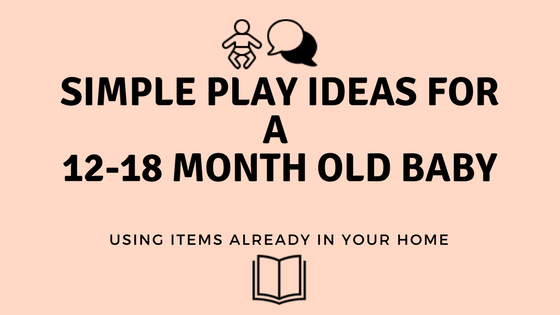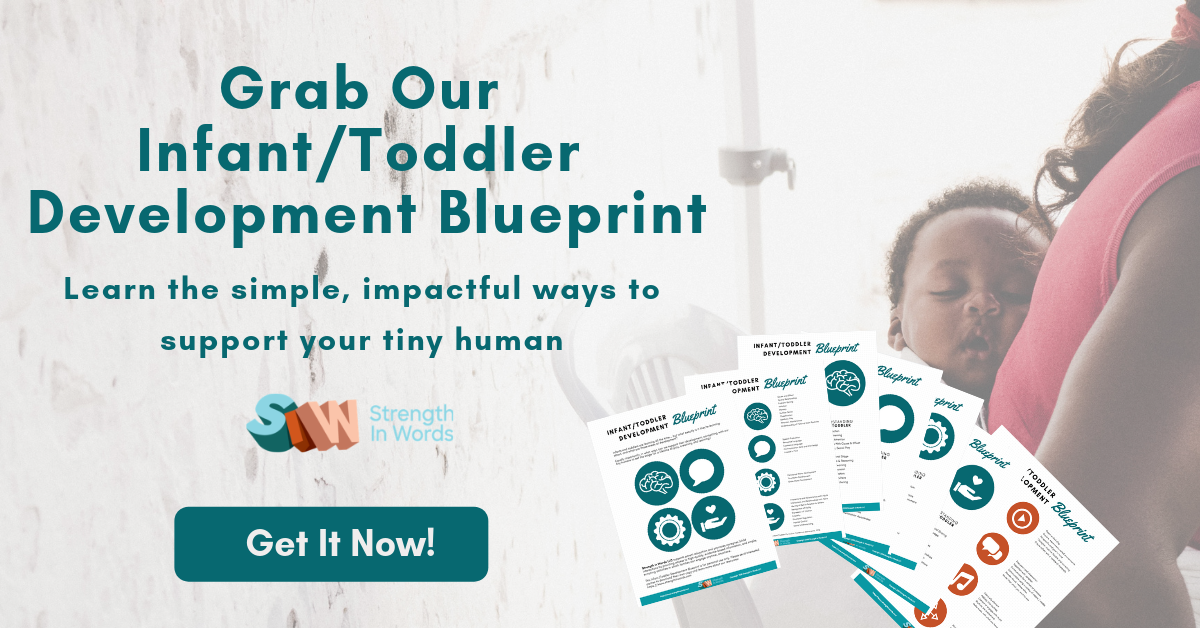Play ideas with a 12-18 month old
Around this age, our children often start to use tools a bit differently – they’ve been performing experiments by mouthing objects, rolling them around, or learning about their shape and weight… and now, they start to use objects more “like we would.”
This is often due to connections they’re making socially (from having observed us in our daily routines or in play), cognitively (using their memory, problem-solving, or sequencing skills and applying what they know about one object to another), and motorically (through practice and coordination with both fine motor and gross motor skills).
Their brains and bodies are growing and changing – and so is their style of play!
This is not to say that they require fancier or more expensive play materials! In fact, quite the opposite.
Often, the materials we have had in our homes this whole time (and often, those household materials that may have been repurposed as “toys” are the most popular!) are the most effective learning materials for our children.
Objects like mixing bowls that sit inside one another, basting or pastry brushes, and colanders are actually toys in disguise, in their natural environment (think: nesting toys, paintbrushes, musical instruments, and sand toys)!
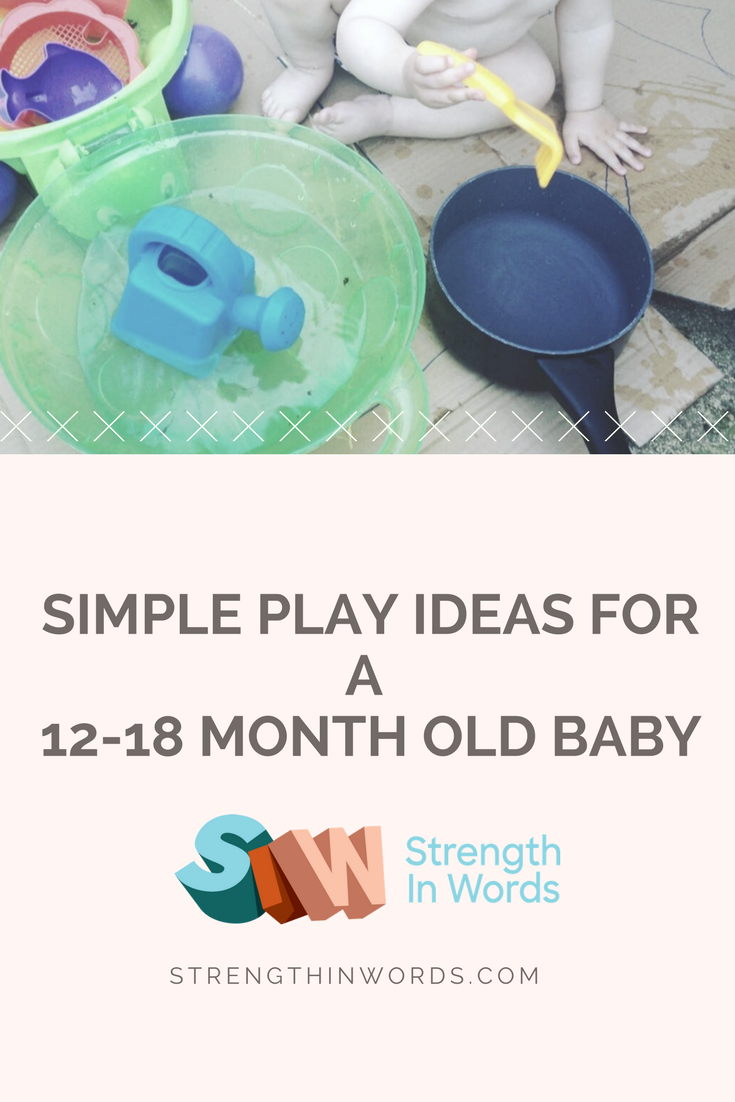
Open-ended play materials are wonderful options, because they allow your child to continue conducting experiments, and they allow your child’s play to evolve naturally (using these items in new or interesting ways, starting to play with objects “symbolically,” or imaginatively – so that a block might represent an ice cube, or a rubber duck might “eat” some play food.
Here’s the thing: you already have everything your baby needs from you.
It’s in your home, in plain view.
It’s just a matter of maximizing the materials you use and the interactive time you spend.
Here are three simple play ideas for you and your 12-18 month old baby.

Simple play idea: Observation!
Materials you need: a place to go in your community!
Instructions:
- Go out in your community and make the entire purpose of the activity into observation and exploration. Choose a museum, a store, an airport, a train station, a shopping center, a library, a park – it doesn’t matter where! Explore the sights, watch people, watch cars go by, touch the glass, point to things.
- Follow your child’s lead! When he takes an interest in something (taking safety precautions!), accept and reinforce it! If he points to an object, state its name. If he says a word for what he sees, expand upon his word. Talk about what he’s doing, what other people are doing, what’s happening around you.
- Simply be. This is play, this is learning: observation, imitation, interaction.
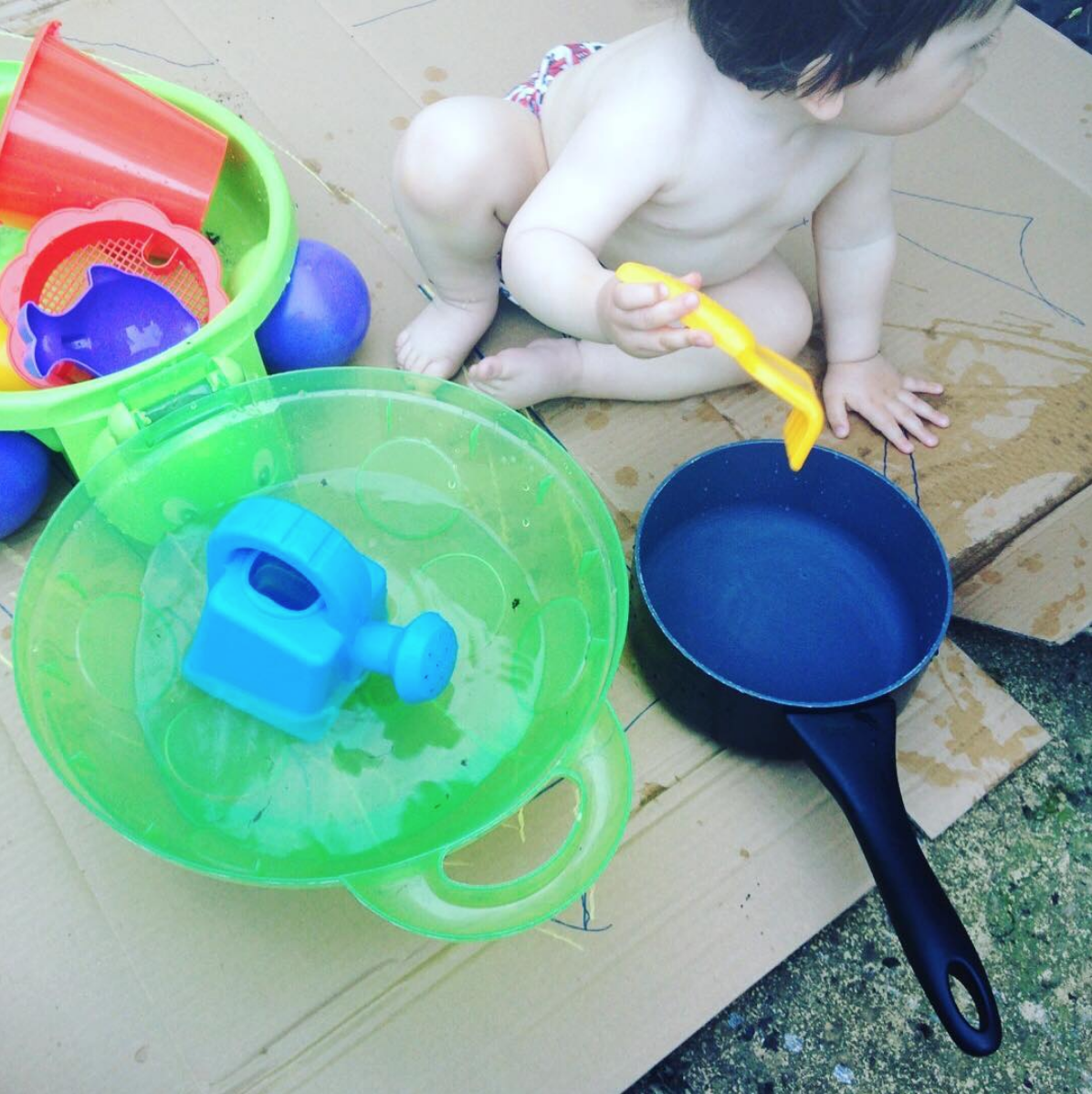
Simple Play Idea: Cardboard water play!
Materials you need: a cardboard box, a bowl of water, and a few kitchen items, sand or bath toys
Instructions:
- Using the cardboard box as your baby’s canvas, “paint” or dribble water on the cardboard, talking about the way it feels, the shapes the water makes, the environmental sounds (“drip, drip, drip!” “splat!” “swissssshhhh”)
- Your young toddler is starting to use tools in new ways, and you can model or encourage this by playing together or by commenting on what your child is doing (while you try to multi-task)!
- Messy play and sensory play don’t have to get terribly messy – and if it’s cold outside, turn up the heat (and limit the amount of water available)!
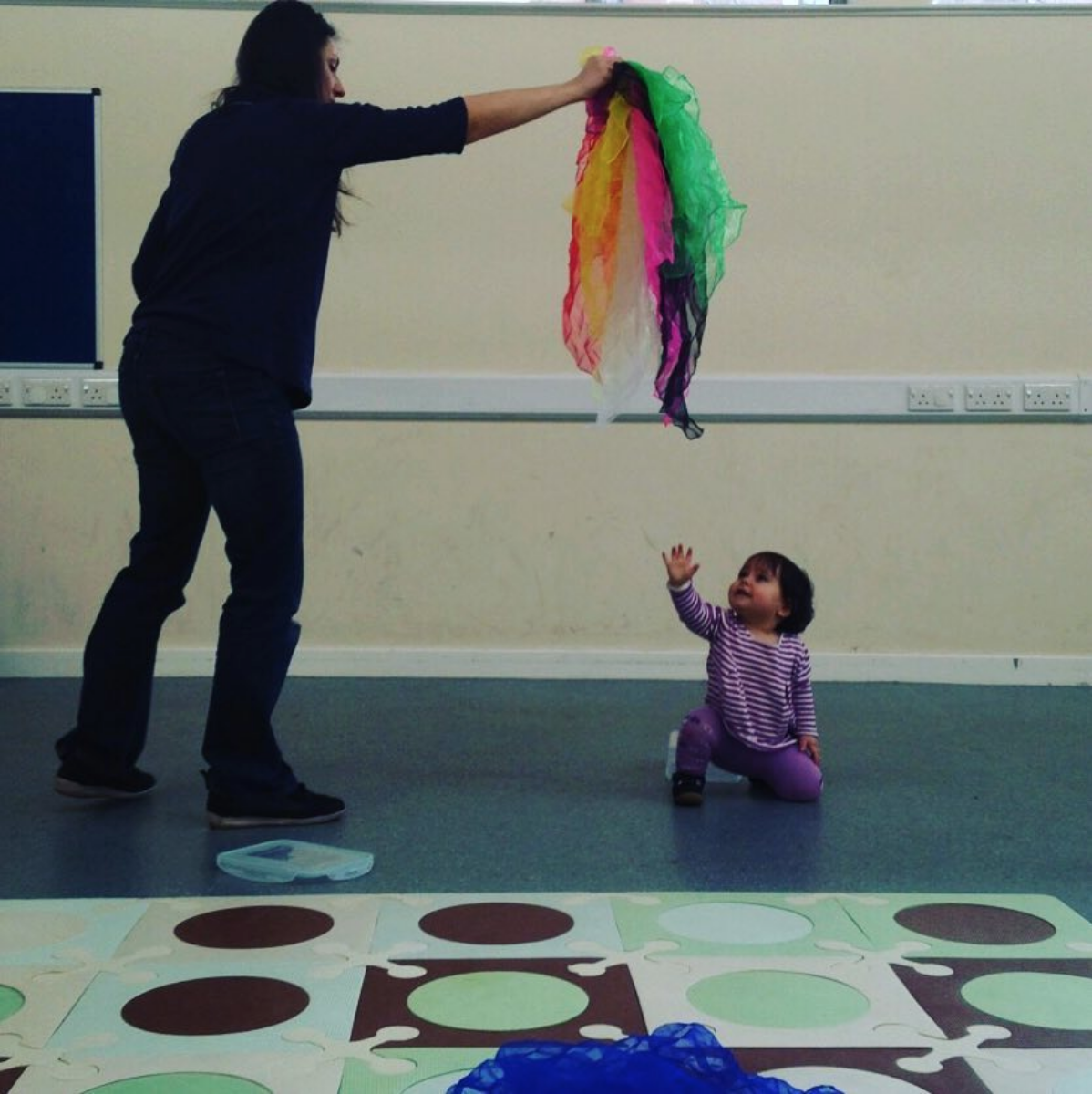
Simple Play Idea: Scarf play!
Materials you need: a scarf or two, lightweight dish towels or swaddle/muslin cloths
Instructions:
- Hold up your materials above your child, sway them around, sing a song while holding them, and then DROP!
- Alternatively, slither them along the ground, play peek-a-boo, or – best yet, hand them to your child and see what SHE does with them!
- Following your baby’s lead allows you to see how she uses materials to engage at her own level.
- Model new ways she can use them, and then watch and provide words for the things she’s doing! Don’t miss the Learn With Less podcast episode, “Assuming Intentionality!”
